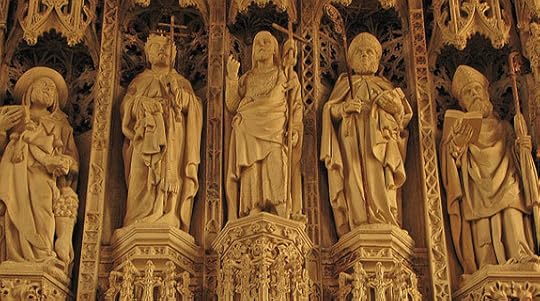Saints, Sinners, and the Perspective of Eternity

Saints, Sinners, and the Perspective of Eternity | Carl E. Olson | Catholic World Report
Vatican II's "Dogmatic Constitution on the Church" is full of riches, if we just take the time to read the text.
“Beloved: See what love the Father has bestowed on us that
we may be called the children of God. Yet so we are.” — 1 John 3:1 (from the Epistle reading for
All Saints)
Almost ten years ago, I co-founded a men’s reading group
that meets monthly to discuss books about Catholic theology and spirituality,
Church history, and related topics. During that time, we’ve read books by
Augustine and Aquinas, Newman and de Lubac, Benedict XVI and Belloc, Pieper and
Shakespeare. A few months ago, we began reading some of the sixteen
documents of the Second Vatican Council, beginning with Lumen Gentium, the Dogmatic Constitution on the Church. Many of
the men—all of them serious, practicing Catholics—had not read the documents,
at least not from start to finish. Several remarked on how surprised they were
by the clarity, beauty, and depth of Lumen Gentium. A couple of them even admitted that the document was not at
all what they expected. “Why,” one asked, “didn’t I read this years ago?”
Years ago, a friend who worked for a small diocese told me
of a seminar he and the other employees in the chancellery office had to
attend. At different times, he told me, the guest speaker would hold a copy of
the documents of the Council and say, “And, as the Council explained…” and
then, closing the book, would proceed to say things that were, in many cases,
quite contrary to what the documents actually state. Or that badly skewed what
was actually put to paper. No one seemed to notice, and when he spoke to
co-workers later, none shared his concern. In fact, they were apparently
oblivious to what the texts state and what the Council intended to communicate
about a host of topics.
On this, the Solemnity of All Saints, followed by All Souls
tomorrow, I want to highlight just three passages from Lumen Gentium that pertain directly to being saints here on earth
and in the life to come.
The second paragraph of Lumen Gentium provides an overview of salvation history that is
echoed in the opening paragraph of the Catechism; it is also fleshed out, in more detail, in the
opening of Chapter II of the document (par 9, especially). The emphasis is, first,
on God’s initiative: as Creator, Father, and Savior. Great stress is placed on
the invitation to man to participate in God’s divine life, something stressed
in today’s Epistle reading from 1 John. The Council fathers wrote:
Carl E. Olson's Blog
- Carl E. Olson's profile
- 20 followers



